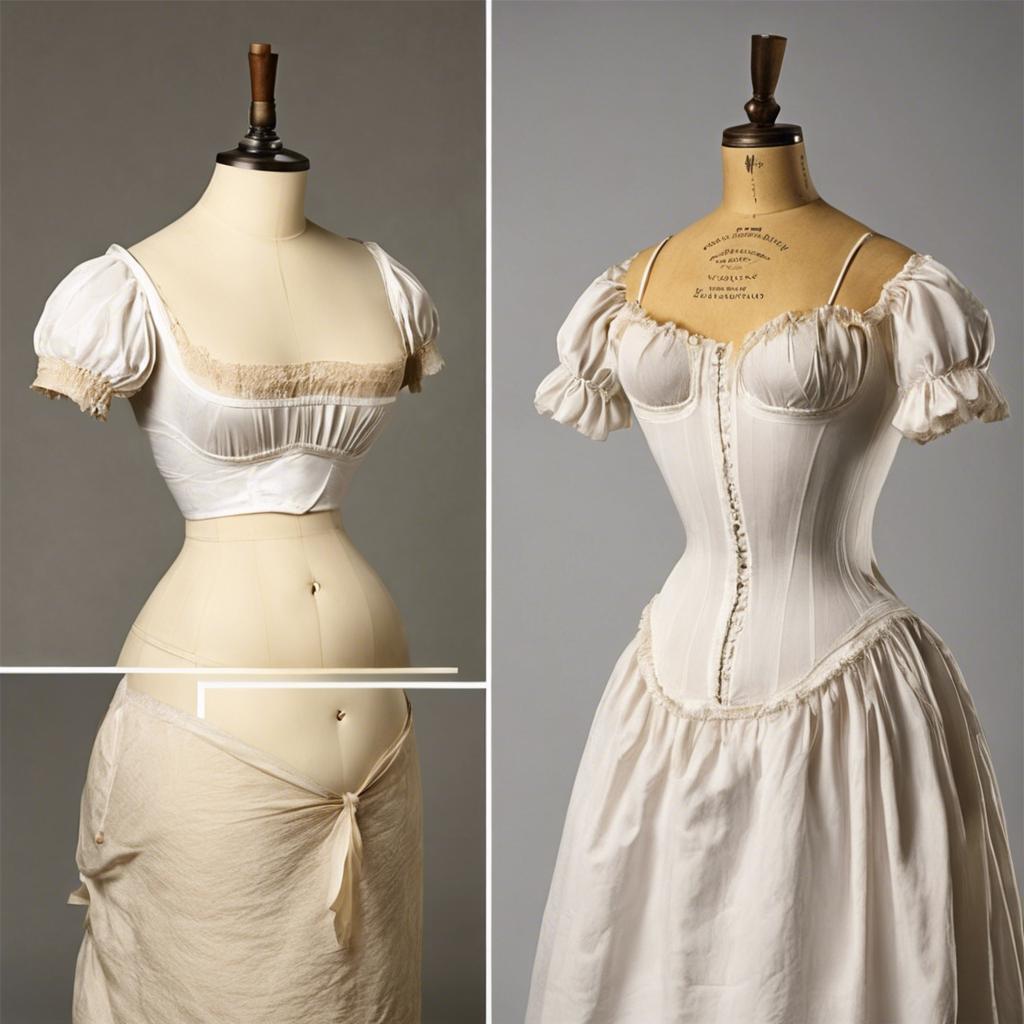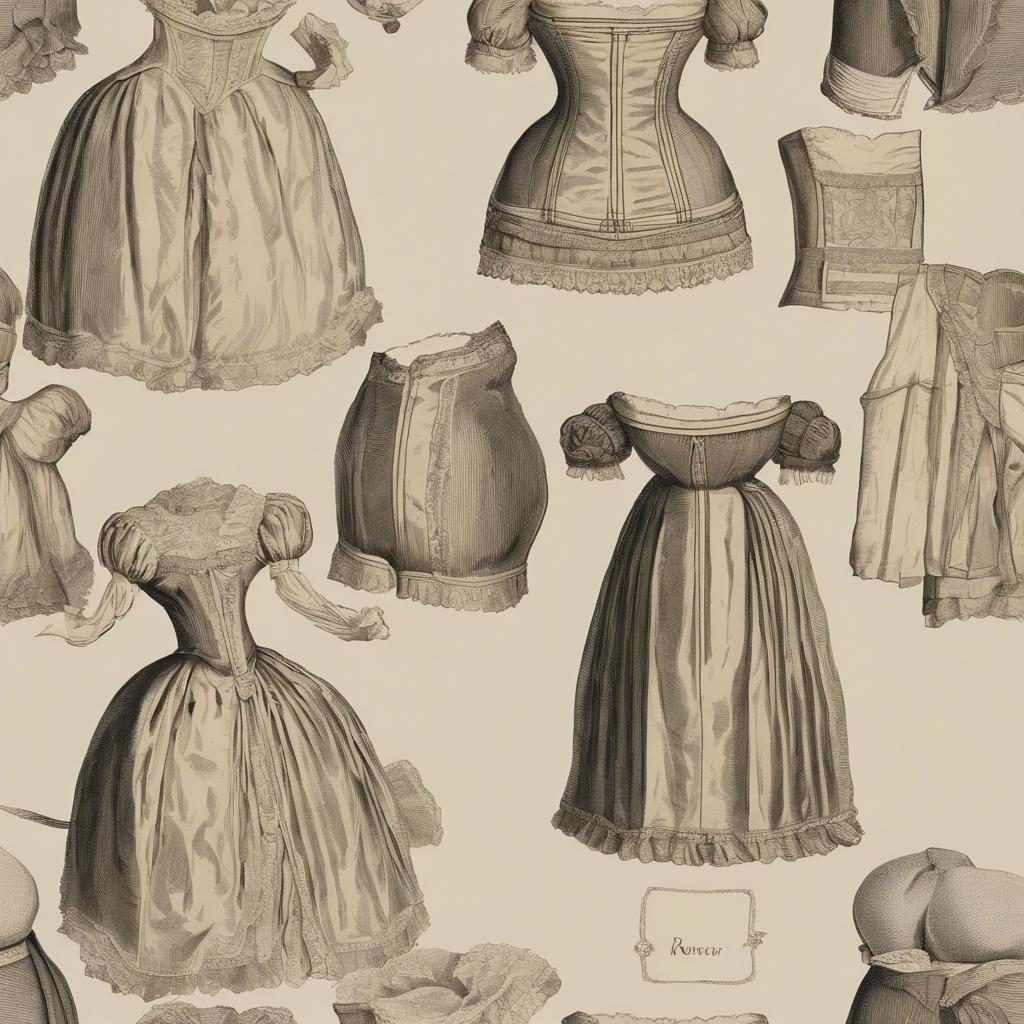In the elaborate and refined world of Regency-era fashion, undergarments played a crucial role in shaping and defining the silhouette of the era. Delving into the intricacies of undergarments from this period offers a fascinating glimpse into the sartorial standards and societal norms that governed the attire of the early 19th century. From stays to shifts, petticoats to drawers, each undergarment served a specific purpose in creating the desired look of the Regency woman. Join us as we explore the underpinnings of Regency-era fashion and uncover the secrets hidden beneath the elegant gowns and Empire-waisted silhouettes of the time.
Introduction to Regency Era Undergarments
Undergarments played a crucial role in the fashion of the Regency Era, shaping the silhouette of women’s clothing during this period. One of the most iconic undergarments of the time was the chemise, a lightweight, loose-fitting garment worn under dresses to protect them from perspiration and provide a smooth base for outer layers.
Features of Regency Era Undergarments:
- Chemise: The chemise was typically made of linen or cotton and featured a high neckline with short sleeves. It was designed to be worn directly against the skin and reached to the ankles, providing a barrier between the outer garments and the body.
- Corset: The Regency Era corset was lighter and less restrictive than later Victorian styles. Made of cotton and whalebone, it gently shaped the torso and supported the bust, creating the desirable empire waist silhouette that was fashionable at the time.
- Drawers: While not as commonly worn as chemises and corsets, drawers were starting to gain popularity in the Regency Era. These loose-fitting undergarments resembled modern-day shorts and were worn underneath dresses to provide additional coverage and modesty.
Table of Regency Era Undergarments:
| Undergarment | Description |
|---|---|
| Chemise | Lightweight garment for under dresses |
| Corset | Lighter and less restrictive than later Victorian styles |
| Drawers | Loose-fitting undergarments for modesty |
Step Into the World of Cheryl Bolen
Dive into the enchanting stories of love, intrigue, and elegance set in the Regency Era. Cheryl Bolen's novels offer timeless romance and captivating tales that will leave you wanting more.
Explore Cheryl Bolen's Books Now
Materials and Construction of Regency Era Undergarments
The undergarments worn during the Regency Era were meticulously crafted with high-quality materials and intricate construction techniques. These undergarments played a crucial role in shaping the fashionable silhouette of the time.
Some of the key materials used in the construction of Regency Era undergarments included:
- Fine linen
- Cotton muslin
- Silk
- Whalebone stays for corsets
The construction of these undergarments involved skilled seamstresses and tailors who utilized techniques such as:
- Hand-stitching
- Ruching and pleating
- Boning for structure and support
- Embroidery and lace embellishments
Functionality and Design of Regency Era Undergarments
The undergarments worn during the Regency Era were crucial in achieving the desired silhouette and style of the period. These undergarments were designed to provide support, shape, and comfort underneath the delicate fabrics of the fashionable gowns.
One of the key undergarments of the Regency Era was the chemise, which was a simple, lightweight garment worn next to the skin. Made of linen or cotton, the chemise helped to protect the outer garments from body oils and sweat. It also provided a smooth base for the gown to drape over, ensuring a neat and polished look.
Corsets were another essential undergarment of the Regency Era, although they differed significantly from the heavily boned and restrictive corsets of later periods. Regency corsets were lightly boned and designed to provide gentle support and shaping to the bust and waist. These corsets were often made of cotton or silk, with delicate lace and ribbon trimmings adding a touch of elegance.
Tips for Choosing Authentic Regency Era Undergarments
When it comes to choosing authentic Regency Era undergarments, there are several key factors to consider in order to ensure historical accuracy and comfort. Here are some tips to help you make the best choice:
First and foremost, it is important to choose undergarments made from natural materials such as cotton, linen, or silk. These fabrics were commonly used during the Regency Era and will provide the most authentic look and feel. Avoid synthetic materials that were not available during this time period.
Additionally, pay close attention to the construction and design of the undergarments. Look for pieces that feature accurate period details such as delicate lace trim, heirloom-quality stitching, and historically accurate silhouettes. Investing in well-made undergarments will not only enhance your overall ensemble but also provide more durability and longevity.
Concluding Remarks
the undergarments of the Regency Era played a crucial role in shaping the fashion and social norms of the time. From the structured stays to the delicate chemises, each piece served a specific purpose in achieving the desired silhouette and modesty. By understanding the importance of these undergarments, we gain a deeper appreciation for the intricate workings of fashion and society during this fascinating period in history. As we look back on the Regency Era, let us not forget the vital role that undergarments played in shaping the lives and experiences of those who lived during this time.


